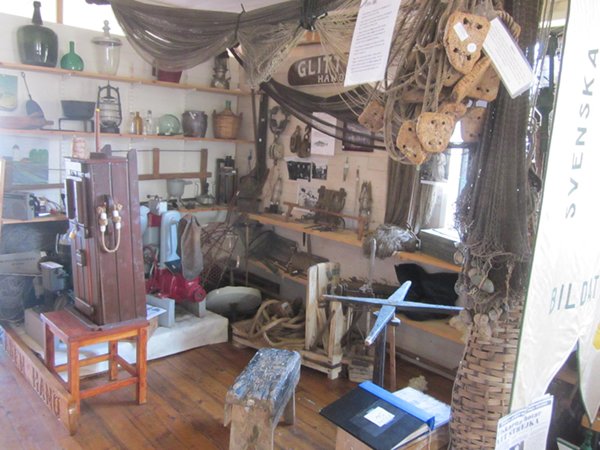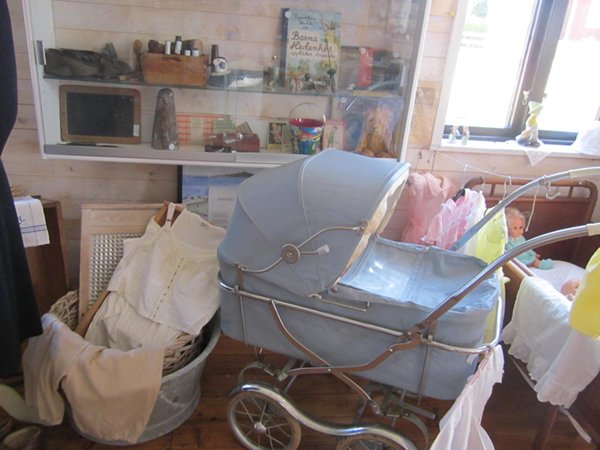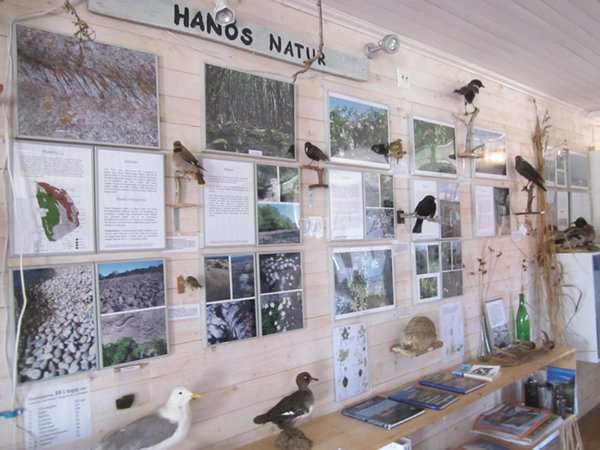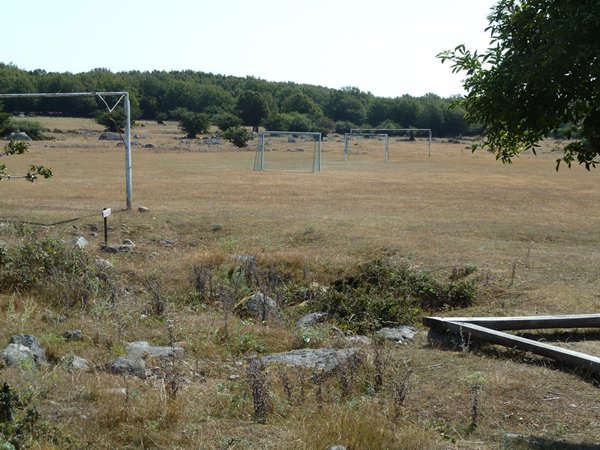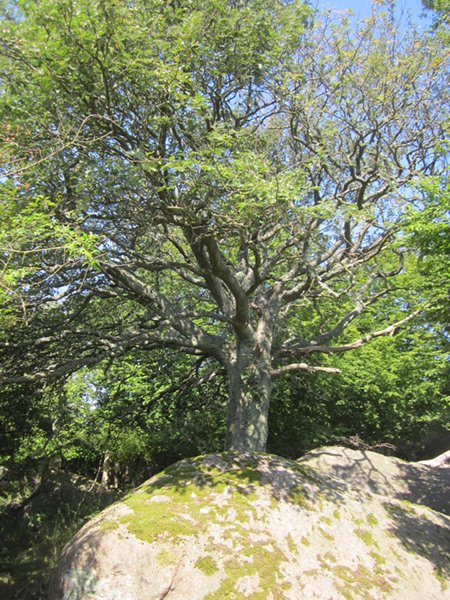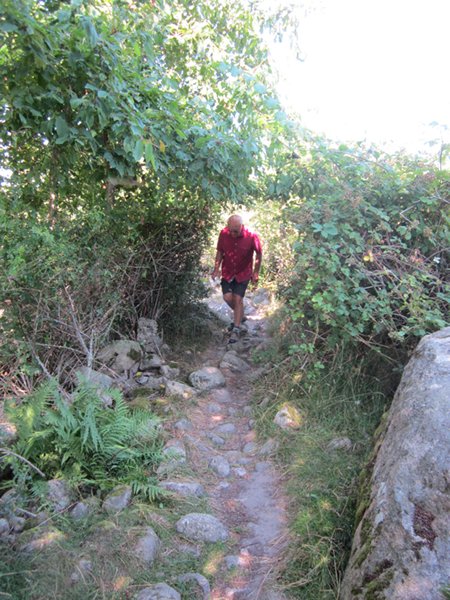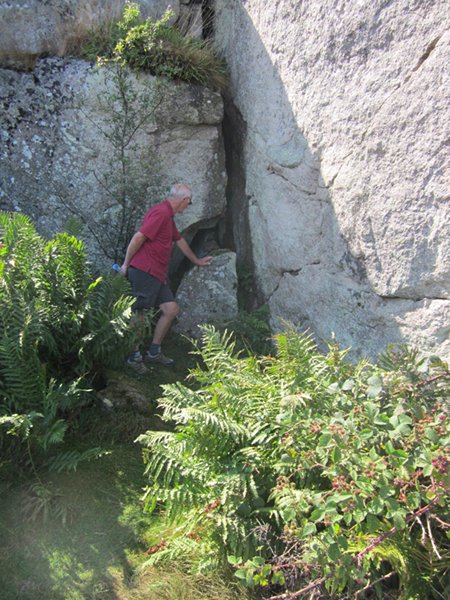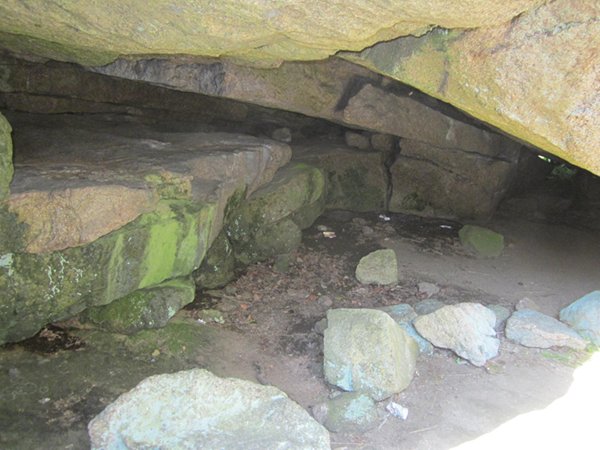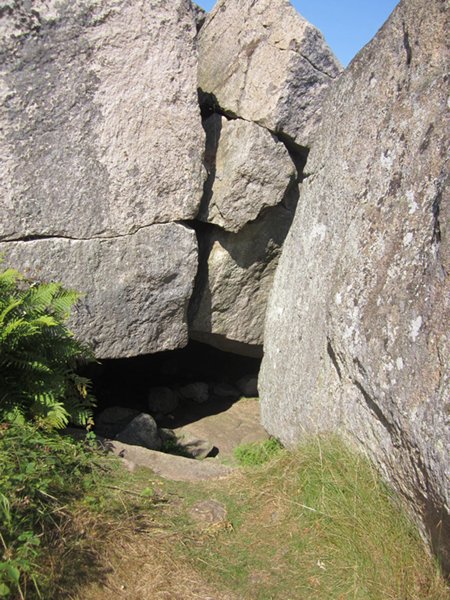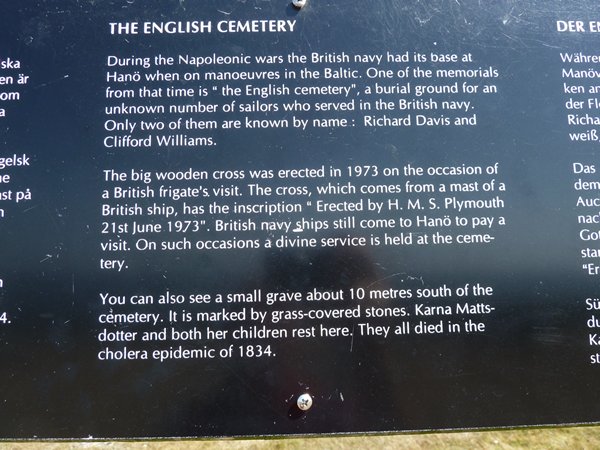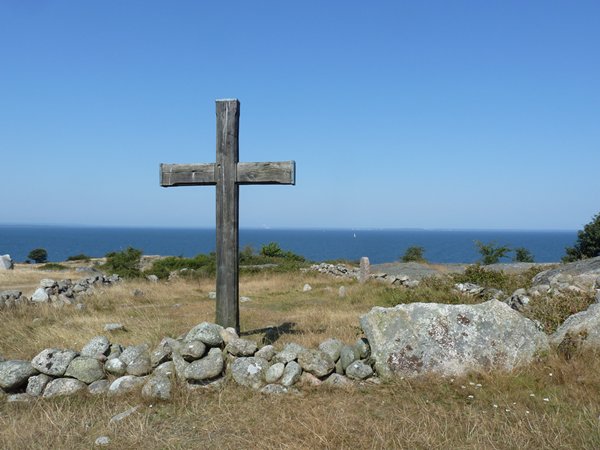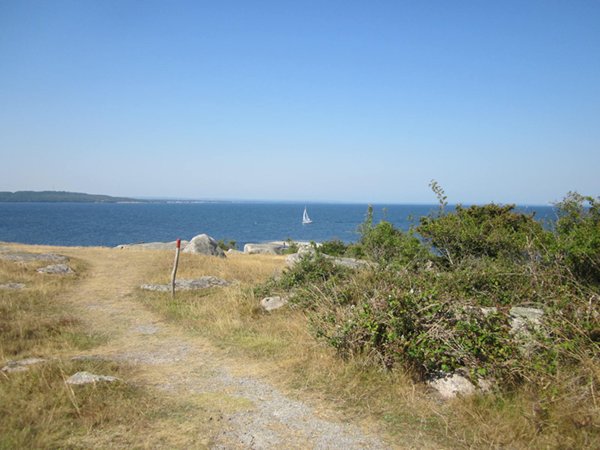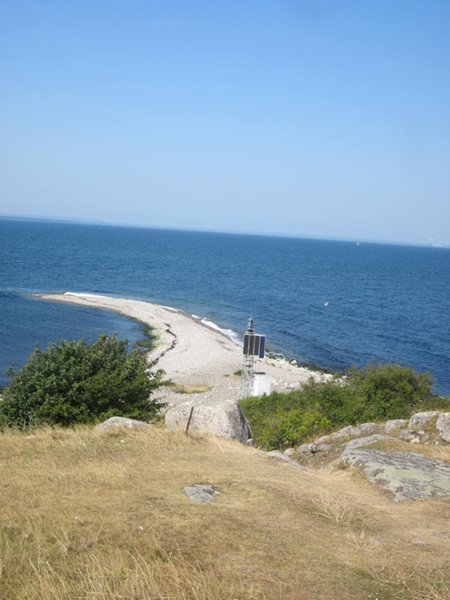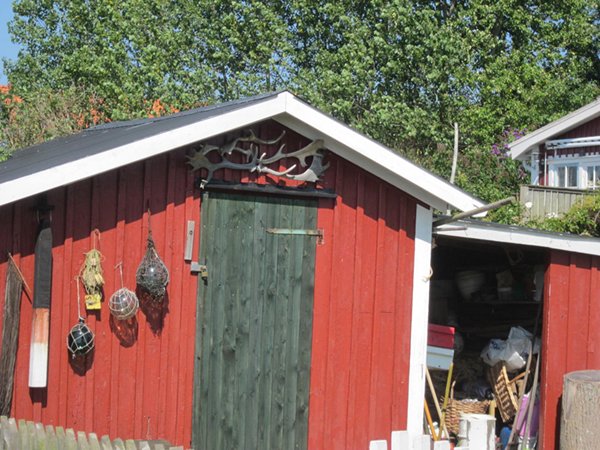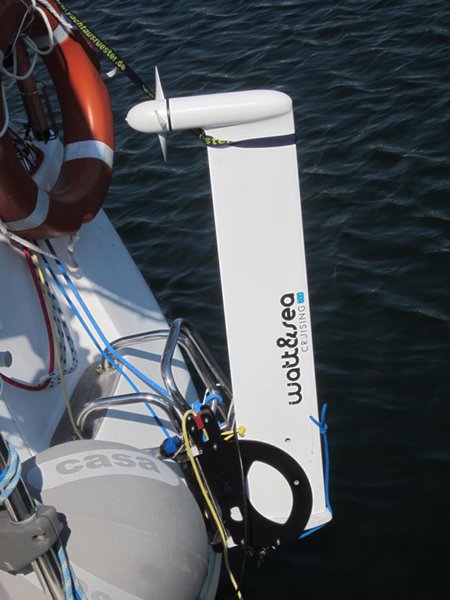Hano

Hano had come highly recommended by other sailors we had met along the way, so we took a day out to explore the island, this time on foot as the paths were not suitable for bikes and it is also quite hilly. It was a lovely sunny day and the skipper (who’d left his hat on the boat) was forced to protect himself from sunburn with a knotted hanky. Unfortunately I was never quick enough to catch this on camera. Our first stop was at the little museum in the harbour reflecting life on Hano. It contained a rather random selection of things, but had charm.
Some of the random exhibits. The bird display had accompanying sounds of bird song
The museum contained pictures of football teams through the ages but the pitch left quite a lot to be desired
This crocodile marked the entrance to a children’s nature trail. There was a rope to make sure everyone went the right way and found their way out The island is famous for its lighthouse, which has the most powerful light of all in the Baltic, reaching 23.5 miles. It was built between 1904 and 1906 and at first the lens was rotated by hand cranking but now everything is electrified and automated.
There were signposts for a path to the wells where the lighthouse keepers used to collect their water so we followed it
It was not apparent whether we had found what we were looking for as it was unlabelled
Then we found this. As the path signs turned back here we concluded we had arrived. Underwhelming or what? The island is also famous for being a base for the English Navy during the Napoleonic wars and there is a cemetery on the island where English sailors were buried. At that time there could be up to 1000 merchant ships anchored in Hano Sound waiting for a Royal Navy escort to the UK. Their cargos were essential for the war effort.
The English Cemetery
At the Northern tip of the island is a strip of stones reaching out into the sea. It consists of egg shaped stones, which move constantly with the wind and waves. It was almost destroyed in 1976, but was rebuilt naturally. Legend has it that the stones were dropped by a lonely giantess trying to build a bridge to the mainland. It is known as the bean bag.
Deer live on the island. At one time their numbers were down to 5 but apparently there are much larger numbers now. We saw plenty of evidence by way of droppings, but no actual deer.
I was amused by this – presumably they have to ‘watt & see’ whether it generates any electricity |

